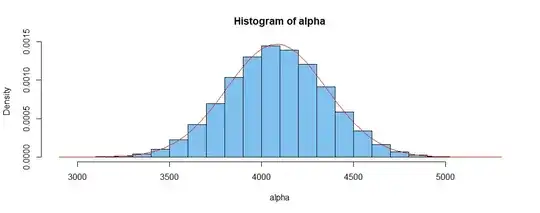Comment: You can get a reasonable approximation to $Var(\alpha)$ by simulation. In the simulation, I assume
the 51 numbers are selected without replacement.
set.seed(2020)
alpha = replicate(10^5, sum(sample(1:159, 51)))
summary(alpha)
Min. 1st Qu. Median Mean 3rd Qu. Max.
2915 3897 4081 4081 4266 5275
Notice that among the 100,000 samples I summed, all of the totals
are between the two numbers you mention in your question.
var(alpha)
[1] 74069.39
sd(alpha)
[1] 272.1569
A histogram of the simulated values of $\alpha$ looks approximately normal, so I show the best-fitting normal
density along wit the histogram.

hist(alpha, prob=T, col="skyblue2")
curve(dnorm(x, mean(alpha), sd(alpha)), add=T, col="red")
With replacement, the variance is somewhat larger.
(Again here the distribution of $\alpha$ seems approximately normal; histogram not shown.)
set.seed(1130)
alpha = replicate(10^6, sum(sample(1:159, 51, rep=T)))
summary(alpha)
Min. 1st Qu. Median Mean 3rd Qu. Max.
2593 3859 4080 4080 4302 5590
var(alpha)
[1] 107274.7
Possible solution: If you consider the population to be numbers 1 through 159, then the population has variance 2120, and the sum of a random sample with replacement should have variance 51 times as large, which is 108,120, which seems to agree with the simulated result within the margin of simulation error.
var(1:159)
[1] 2120
51*var(1:159)
[1] 108120
